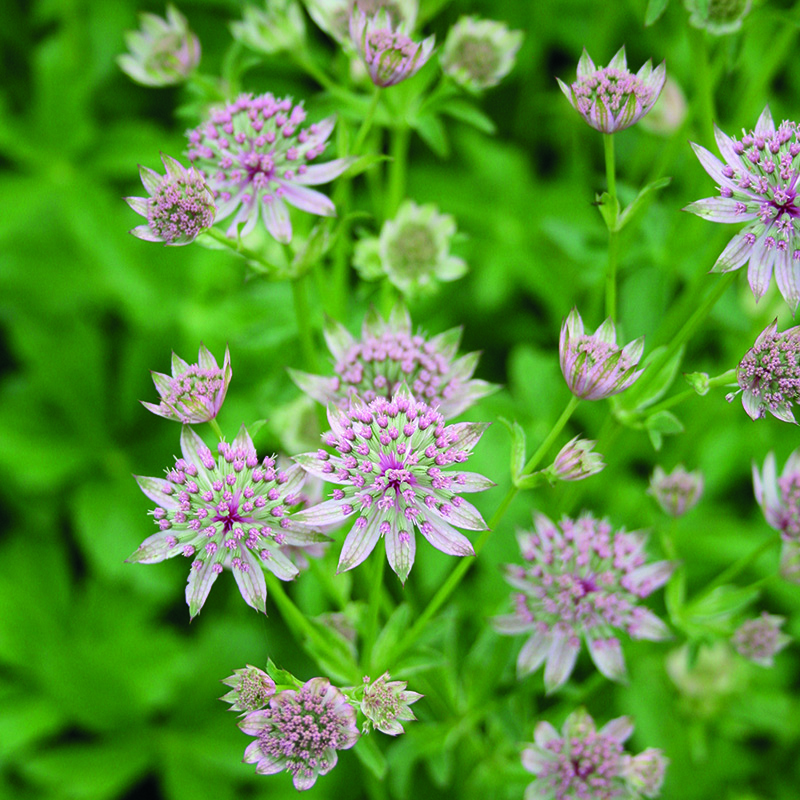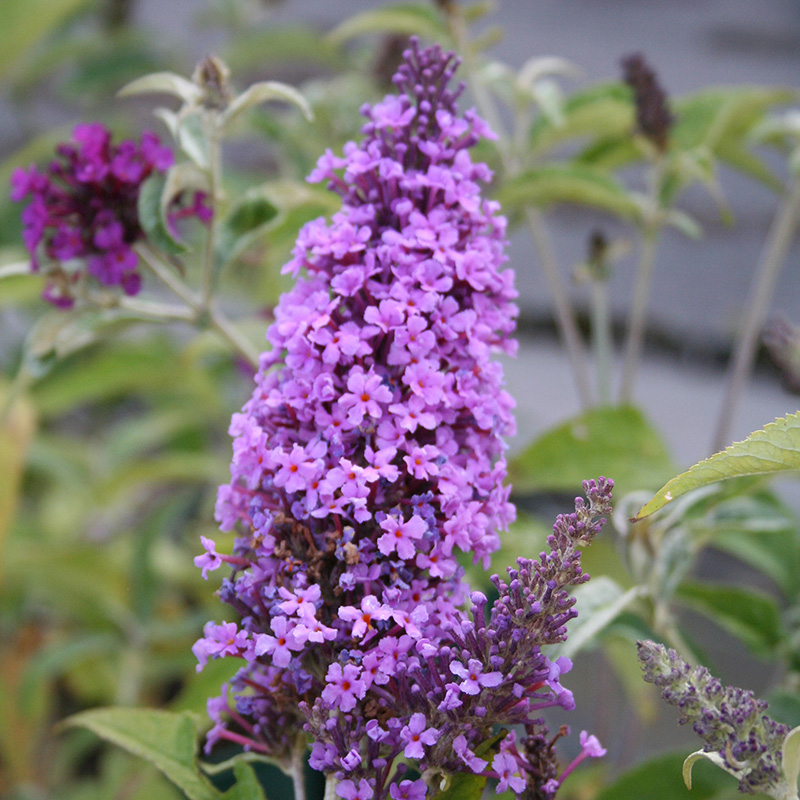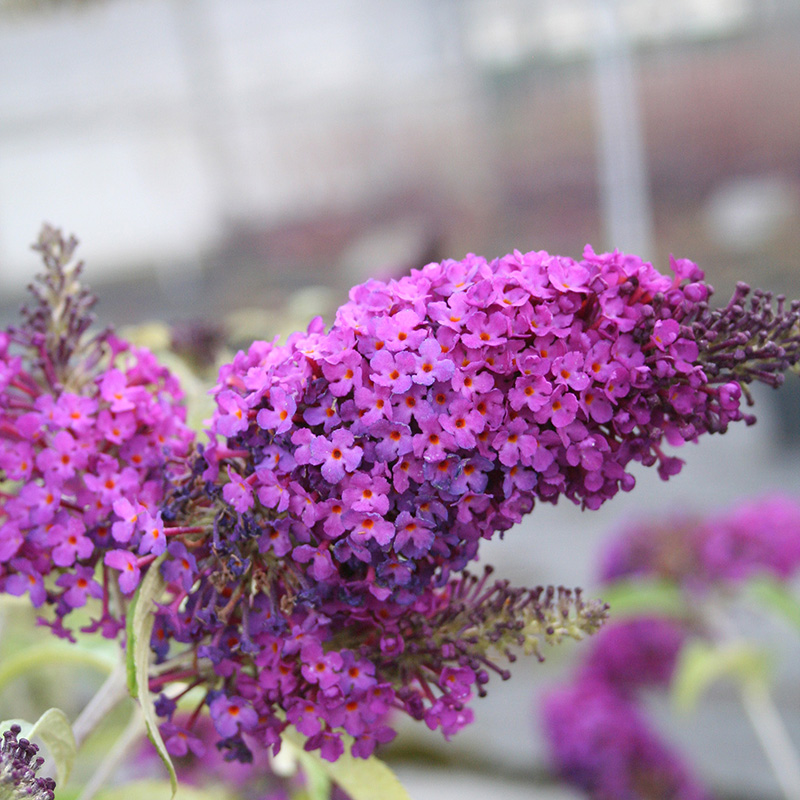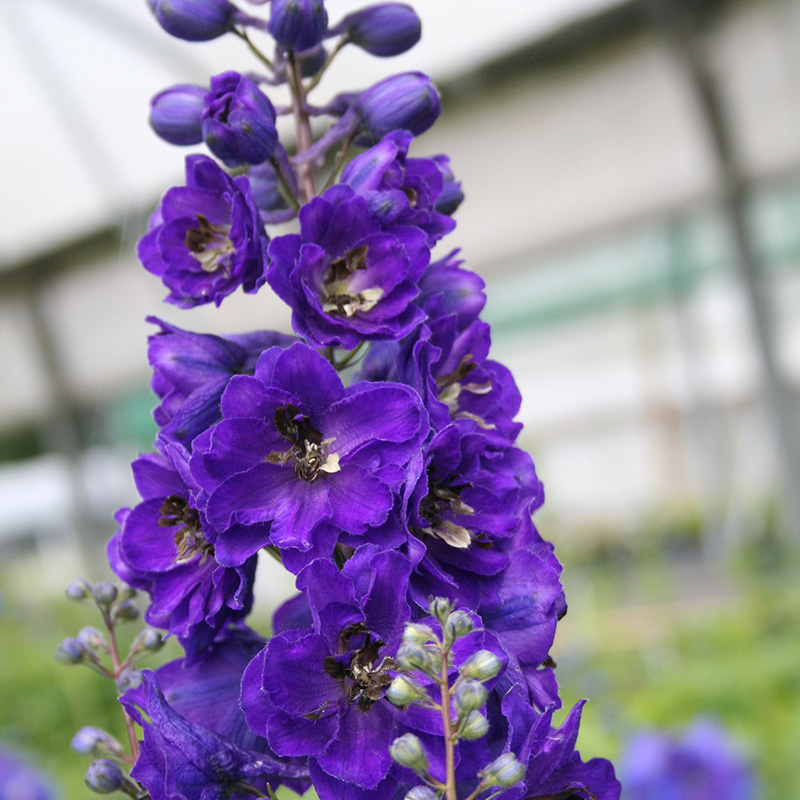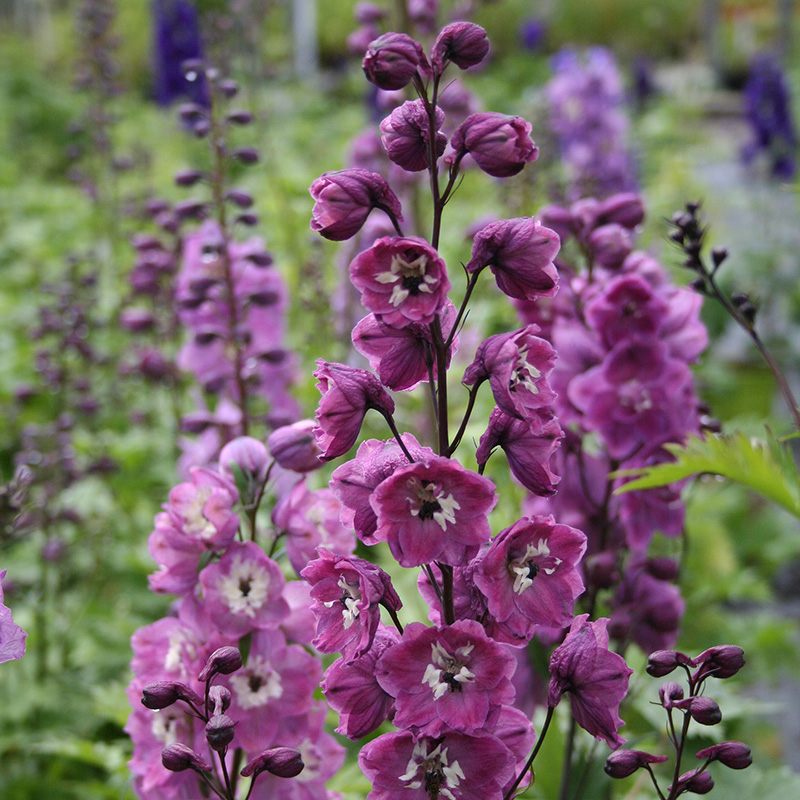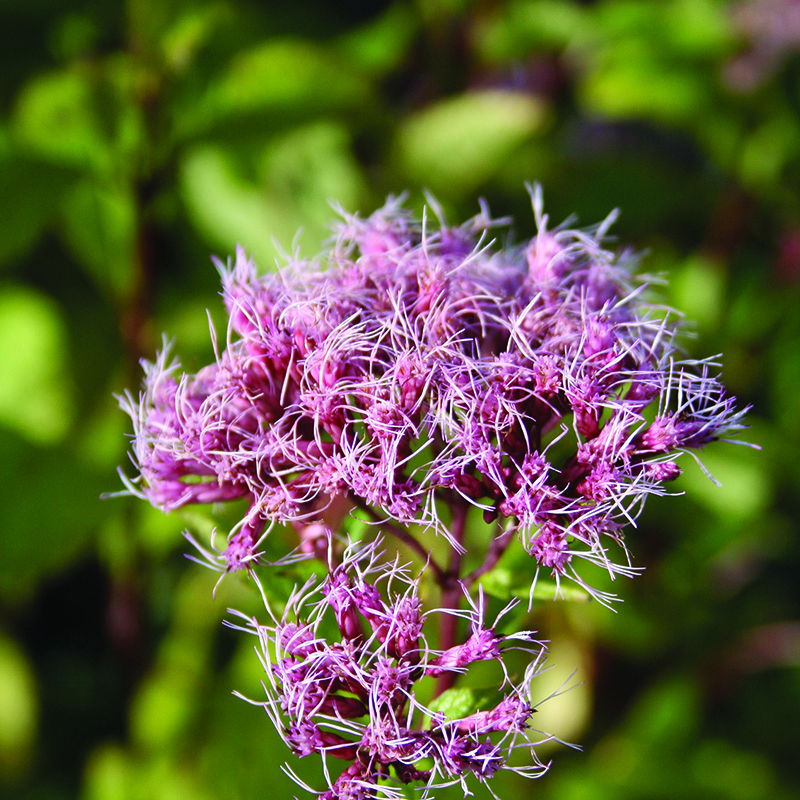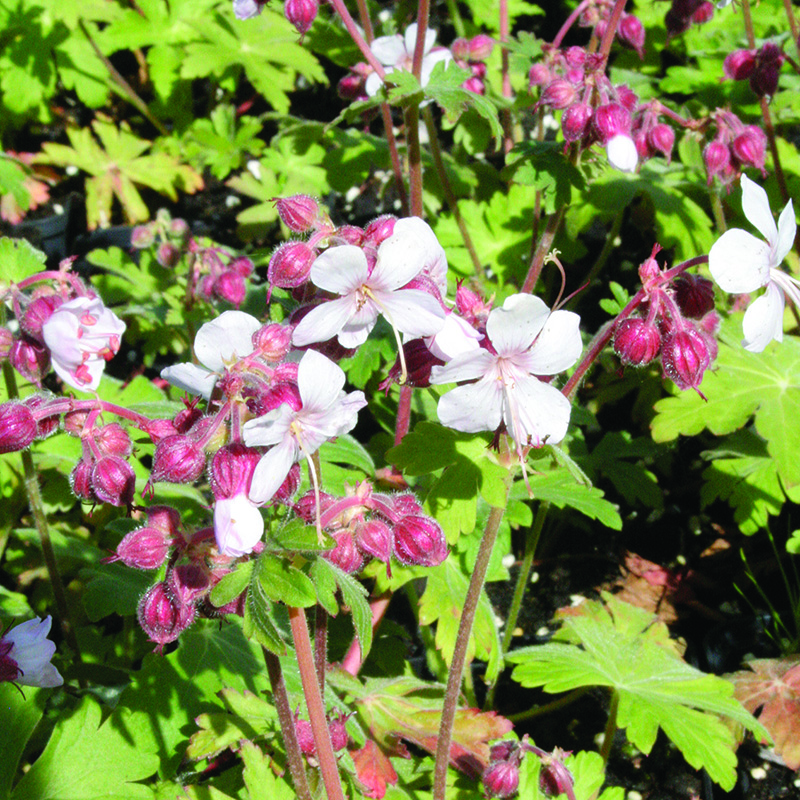Herbaceous Perennials
Herbaceous plants (in botanical use frequently simply herbs) are plants that have no persistent woody stem above ground. The term is mainly applied to perennials, but in botany it may also refer to annuals or biennials, and include both forbs and graminoids.
Annual herbaceous plants die completely at the end of the growing season or when they have flowered and fruited, and they then grow again from seed.
Herbaceous perennial and biennial plants may have stems that die at the end of the growing season, but parts of the plant survive under or close to the ground from season to season.
Dierama pulcherrimum ‘Dark Cerise’
A truly elegant addition to any garden. Narrow evergreen grass-like leaves form a clump, which is graced with tall arching stems resembling fishing rods - as it's name suggests. Nodding, bell-shaped, deep and dark purple flowers dangle delicately from mid-late Summer. Height 100 cm. Spread 60 cm. Position in well-drained soil in full sun. Prefers a sheltered spot. Good in beds, borders, cottage or coastal gardens. Also suitable in gravel/courtyard gardens or on banks/slopes.
Eupatorium purpureum ‘Ruby’
A Eupatorium with a neat and compact growing habit and blooming earlier than other varieties. Bright green foliage forms and upright clump. In late Summer purple red stems bear a profusion of pink-purple flowers. Highly attractive to bees, butterflies and other pollinators. Garden plant for flowerbed in moist, free-draining soil in full sun. Good in beds, borders, wildlife gardens, or great in pots and containers. Height 80 cm. Spread 80 cm.
Fuchsia ‘Riccartonii’
A vigorous growing Fuchsia, forms an upright medium sized bush of ovate dark green leaves. From early Summer the pretty looking flowers will begin to dangle from arching stems on the foliage. Vivid crimson wings surround deep purple tubular centres and will continue to bloom right throughout the Summer until the first frosts. Excellent garden plant highly attractive to pollinators. Height 200cm. Spread 150cm. Position in moist but well-drained soil in full sun or partial shade. Needs shelter from cold drying winds. Good in beds, back of large borders, cottage style or informal gardens.











